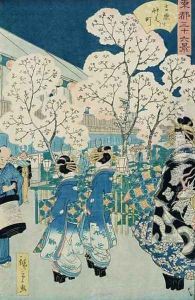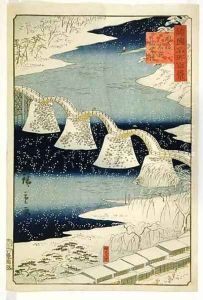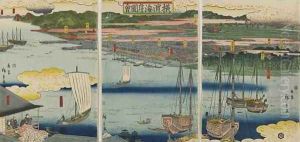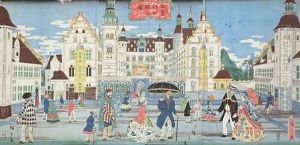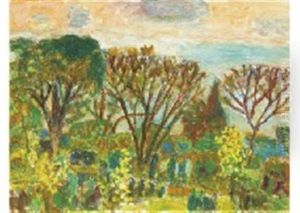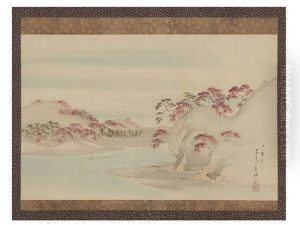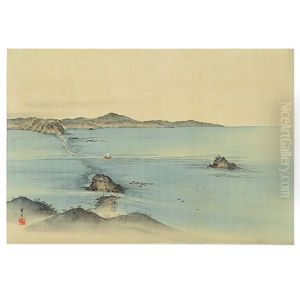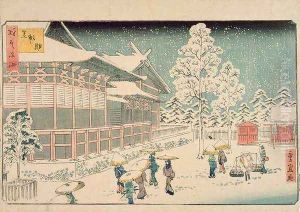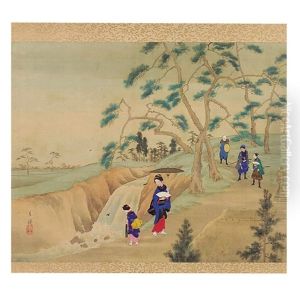Hiroshige II (Ichiusai Shigenobu) Paintings
Hiroshige II, originally named Suzuki Chinpei, was a prominent Japanese ukiyo-e artist known for his landscape prints and woodblock designs. He was born in 1826 and adopted the name Ichiusai Shigenobu. His work is closely associated with that of Hiroshige I, under whom he studied and whose artistic legacy he carried forward after Hiroshige I's death in 1858. Hiroshige II married Hiroshige I’s daughter, Otatsu, further solidifying his position as the successor and adopting the name Hiroshige after the death of his master and father-in-law. Despite this, he is often considered to have lived in the shadow of Hiroshige I, struggling to emerge as a distinct artist in his own right during his lifetime.
Hiroshige II's career was marked by his dedication to the ukiyo-e genre, specifically focusing on landscapes and scenic views that were popular among the Edo populace. He worked within the tradition established by Hiroshige I, producing series that depicted famous landscapes across Japan with a keen eye for detail and atmospheric perspective. His works, such as the 'One Hundred Famous Views of Edo' and 'Thirty-six Views of Mount Fuji,' continued the themes popularized by his predecessor, albeit with his own stylistic nuances. His prints are characterized by their vivid colors, attention to the changing seasons, and the incorporation of travel scenes and famous locations, which were a burgeoning interest among the Japanese urban population at the time.
However, despite his efforts, Hiroshige II's work was often criticized for lacking the originality and depth of Hiroshige I’s creations. It was only after his move to Yokohama following his separation from Hiroshige I’s family that he began to develop a more distinct style, experimenting with Western influences and broadening his subjects to include more varied landscapes and themes. His later works show a greater confidence in his use of color and composition, demonstrating a departure from the strictures of his early career.
Hiroshige II's life came to an early end in 1869, by which time the political and social landscapes of Japan were dramatically changing due to the Meiji Restoration. Despite the overshadowing fame of Hiroshige I, Hiroshige II's contributions to the ukiyo-e genre have been reevaluated in recent years, with a growing appreciation for his efforts to sustain the tradition of landscape art in Japan while also attempting to carve out his own artistic identity. His works are now celebrated for their beauty and historical value, providing insight into the cultural and environmental contexts of Edo-period Japan.
